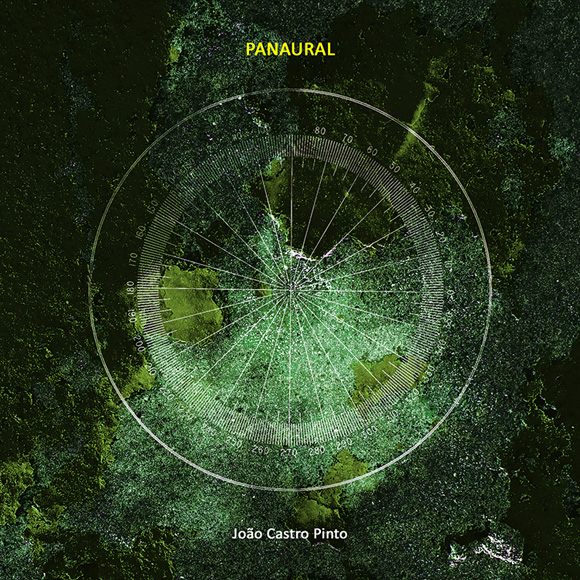Panaural. JOAO CASTRO PINTO
(Triple Bath 2012)
Talking about the formal practice of incorporating any typology of sound into a musical piece, John Cage is named in the very first line of the press sheet of ‘Panaural’. But this is just one of the illustrious names mentioned throughout the presentation of the work. Douglas Khan, Russolo, Shaeffer, Stockhausen, Xenakis, Schafer, Truax are all figures that are recalled in the introductory words about this new record by João Castro Pinto.
Interesting indeed. Pretentious maybe. What does the listener should expect from such flattering description?
All the fears and doubts disappear after listening just the beginning of the first track. Paraphrasing the description of the piece, the listener is brought into a meta-soundscape composition that ascribes sound images into silence. The compositional degree of complexity of the audio material is extremely high revealing the artist’s great confidence with what we could easily describe as concrete music. The soundscape is always in motion, the boundaries between the audio materials are constantly blurred by means of rapid shifts, sudden silences and subtle morphing of the sound sources. Everything is recorded and edited with great care and attention. Very effective use of all the traits of the recordings, even the smallest and somewhat insignificant aural detail is here considered as a fundamental block that characterizes and carves the resulting soundscape piece.
The second track is as effective as the first one, yet different in terms of structure and intents. Here the audio material consists of field recordings from crackling wood, water, wind, stones, animals, insects, walking humans, quiet soundscapes that were captured by the author and used as sound sources for the creation of an immersive binaural oneiric-walk.
For the third track I will literally make a “copy and paste” of the description provided in the press sheet as I find it extremely well crafted and it lets us understand perfectly the direct intentions of the sound artist himself without any personal and subjective interpretations:
“Catachresis (the title of the third track) is a soundscape composition focused on the complex idea of the ambiguous denotative and connotative character of metaphors, not applied to linguistics but to the sound world. Meaning, literally, abuse, Catachresis is defined as a kind of misapplication of a word, in terms of its utter significance, frequently portraying the function of referring to a concept that linguistically has no definite term or word to state its reference, that is: its denotative conceptual definition. The term Catachresis is a conceptual frame to strengthen the aural ambiguity of meaning, reference and its perception. This piece presents a selection of aural events and geographic locations that explore the ambiguity of recognizable and contrasting / conflicting sound plots, by suggesting complex sound canvas fulfilled with contradicting and improbable events and juxtaposing sound frames with the intention to create a flow of intrinsic sonic unity. Catachresis actually intends to forge a real soundwalk, as it tries to convince the listener that the perceived sound output corresponds to an actual linear soundwalk, i.e., a walk that could have happened exactly the way the piece is composed and presented sound wise, as one would be walking and freely recording natural landscapes. This long piece is essentially based in field recordings captured along different and contrasting natural locations as: urban sounds of the city of Lisbon; natural sounds from several locations of Tagus river (the harbor of Cais do Sodré; near Belém Tower and on the verge of flowing to the Atlantic ocean); natural sounds captured in several locations of Sintra’s forest, Canterbury’s Cathedral (UK) premises and inside its buildings, including recordings from instrumental music (a pipe organ) and a mass choir. In order to constitute the idea of a feasible soundwalk, the piece was composed as a continuous mix, so there is no absolute silence between its 7 parts. Minimal sound processing techniques (equalization and mixing) were used in this piece (a few electroacoustic processing occurs in the latest parts of the piece), for the main idea here is to reveal a soundscape compositional approach.”
[Joao Castro Pinto courtesy of Triple Bath]
It should be clear by now that João Castro Pinto knows exaclty what he is doing with sounds even, and maybe foremost, from a conceptual point of view. Nothing is left to chance. In these pieces the artist shows no fear to be compared with the names listed at the beginning and the listener should rapidly give him credit for what he has made on these pieces. ‘Panaural’ is not an easy listening, it requires attention to be thoroughly appreciated. But once you get into it, you cannot deny the objective value of this record: artistically, conceptually and technically one of the best episodes of the Triple Bath catalogue.
-Elliot Loe



